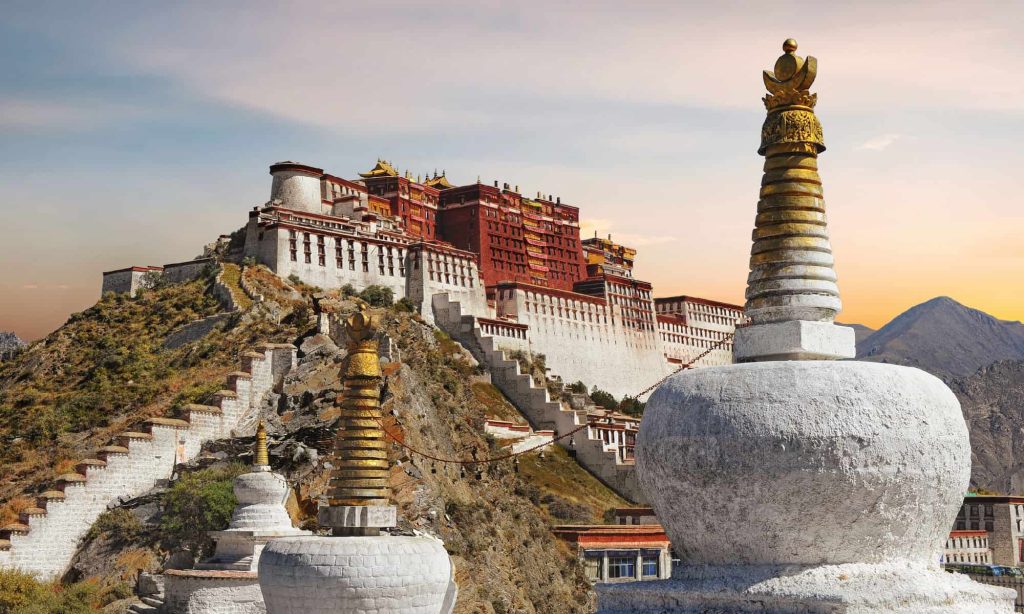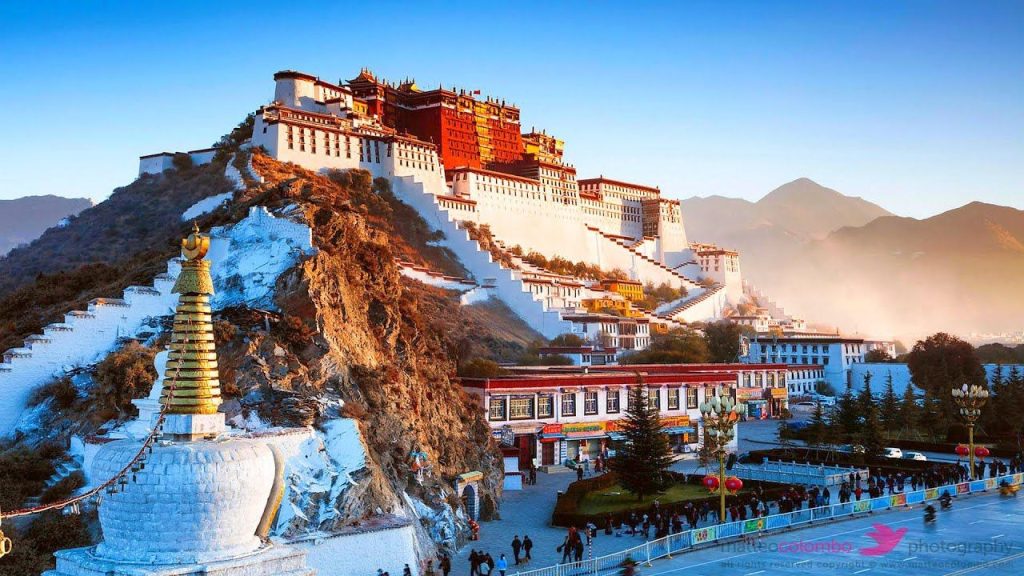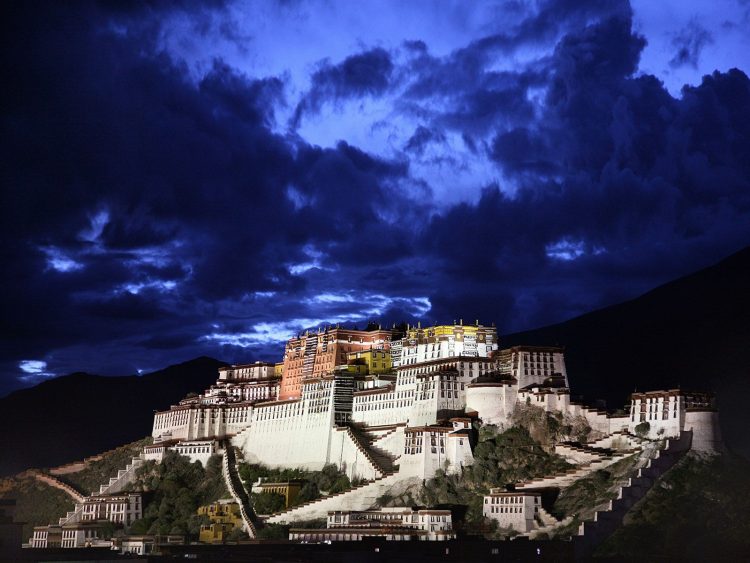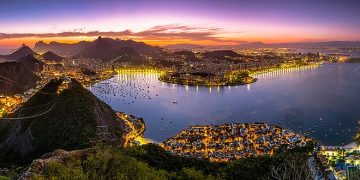Tibet, this mysterious and holy land, has been a place of longing for countless people since ancient times. On this plateau stands a magnificent palace, the Potala Palace, which is not only a landmark building in the Tibet Autonomous Region, but also a shining pearl in the world cultural heritage. The Potala Palace not only carries a rich historical background, unique architectural features and profound cultural connotation, but also occupies a pivotal position in Tibetan Buddhism, and has a profound impact on the spread and development of Tibetan Buddhism.
- Historical background: The vicissitudes of the thousand-year ancient palace
The Potala Palace was built in the 7th century by Songtsen Gampo, the 33rd Tibetan king of the Tubo Dynasty. In order to marry Princess Wencheng of the Tang Dynasty, Songtsen Gampo decided to build a magnificent palace on Mapuri Mountain (Red Mountain) in downtown Lhasa to show his respect for the Tang Dynasty and his belief in Buddhism. According to legend, when the Potala Palace was originally built, there were 999 houses, plus a total of 1,000 practice rooms, a grand scale and magnificent. However, with the dissolution of the Tubo Kingdom, the Potala Palace also experienced the ravages of natural and man-made disasters and suffered many damages.
In the middle of the 17th century, the Fifth Dalai Lama decided to rebuild the Potala Palace in order to consolidate the local power of Gandan Pojang under theocracy. He extensively recruited craftsmen and artistes, mobilized a lot of manpower and material resources, and after many years of efforts, finally rebuilt the Potala Palace into a magnificent palace. Since then, the Potala Palace has experienced many expansions and repairs, and gradually formed the present scale. This palace is not only the winter palace of successive Dalai Lamas, but also the ruling center of theocracy of the local rulers of Tibet. Since the Fifth Dalai Lama, major religious and political ceremonies have been held here, making the Potala Palace the political, religious and cultural center of Tibet.

The history of the Potala Palace is an epic full of legend and mystery. It has witnessed the vicissitudes of Tibet and carried the beliefs and dreams of countless Tibetan people. In this palace, we seem to be able to travel through time and space, back to that glorious era, feel the ancient and mysterious charm.
Two, architectural features: red and white magnificent palace
The Potala Palace is built on a mountain with a group of overlapping buildings and magnificent momentum. The overall building presents a red and white appearance, and the main building is divided into two parts: the White House and the Red Palace. The White House is located on the east side, where the Dalai Lama has lived and worked. The Red Palace, in the center, is a place for religious activities and the shrine of the Dalai Lama. The layout of the red and white palaces not only reflects the functional division of the Potala Palace, but also symbolizes the social system of theocracy in Tibet.
The architectural style of the Potala Palace is unique, combining various architectural styles of Han and Tibet, India and Nepal. The palace adopts wood and stone structure, the outer wall is 2 to 5 meters thick, the foundation is directly buried in the rock layer, the wall is all made of granite masonry, and the iron juice is poured every distance to strengthen the whole building, making the whole building solid and stable, and the earthquake resistance is strong. The roof and eaves are made of wooden structure, the eaves are raised, the corners are raised, and the bronze tiles are gilted in the sun. The interior and exterior of the palace are gorgeously decorated and beautifully carved, and every detail demonstrates the ingenuity and exquisite craftsmanship of the Tibetan people.
The architectural style of the Potala Palace not only reflects the wisdom and creativity of the Tibetan people, but also demonstrates their unique aesthetic concepts and artistic pursuits. In this palace, we can appreciate the unique charm of Tibetan architecture, but also feel the profound Tibetan culture.
Third, cultural connotation: the perfect combination of faith and art
Potala Palace is not only a magnificent palace, but also a treasure house of culture and art. The palace has a large collection of Buddhist scriptures, religious artworks and cultural heritage, such as murals, Buddha statues, prayer flags and so on. These precious cultural relics not only reflect the history and religious beliefs of Tibet, but also provide opportunities for future generations to study and learn.
The murals of the Potala Palace are an important part of its artistic value. Each hall and corridor in the palace are painted with colorful murals, the content of both colorful myths and legends, and there are many precious historical materials. These murals vividly depict such historical scenes as the marriage of Songtsen Gampo and Princess Wencheng, and the visits of the Fifth Dalai Lama and the 13th Dalai Lama to the Qing Dynasty emperor in Beijing, making people feel as if they were in that glorious era. These murals not only have high artistic value, but also are important materials for the study of Tibetan history and culture.
There are also a large number of exquisite Buddha statues in the Potala Palace. These Buddha statues are beautifully carved and lifelike, which not only shows the superb level of Tibetan sculpture art, but also reflects the deep tradition of Tibetan Buddhism’s worship of Buddha statues. Among them, the pagoda of the Fifth Dalai Lama is the most spectacular. This great pagoda is 14.85 meters high, from top to bottom all with gold bag set, inlaid with numerous gems, brilliant gold, breathtaking. This pagoda is not only the resting place of the Fifth Dalai Lama, but also a noble symbol of the Tibetan people’s faith in Buddhism.
The cultural heritage inside the Potala Palace also includes a large number of Buddhist scriptures and prayer flags. These scriptures and prayer flags not only record the teachings and rituals of Tibetan Buddhism, but also carry the beliefs and prayers of the Tibetan people. They are an important part of Tibetan culture and important materials for the study of Tibetan Buddhism.
The important position and influence in Tibetan Buddhism
The Potala Palace occupies an important position in Tibetan Buddhism. It is not only the main monastery of the Gelug School of Tibetan Buddhism, but also the winter palace of the Dalai Lama and the center of theocratic rule of the local rulers of Tibet. Since the Fifth Dalai Lama, major religious and political ceremonies have been held here, and the Potala Palace has thus become a sacred place in the hearts of Tibetan Buddhist believers.
Every year, a large number of believers and monks will make a pilgrimage to the Potala Palace to express their piety and faith. Here they chant, pray, bow their heads and seek spiritual comfort and enlightenment. For Tibetan Buddhist believers, the Potala Palace is not only a magnificent palace, but also a symbol of faith and spiritual sustenance.
The Potala Palace also had a profound impact on the spread and development of Tibetan Buddhism. As one of the centers of Tibetan Buddhism, it has attracted many eminent monks to give lectures and teach Dharma. These monks have made great contributions to the inheritance and development of Tibetan Buddhism by promoting the Dharma and cultivating monk talents here.

Fifth, personal perception and visit experience
When I stood in front of the Potala Palace for the first time, my heart was deeply shocked. This ancient palace, located on the Mabuj Hill, with its majestic architecture, long history and rich cultural connotations, made me feel more awe and dignity than ever before. I followed the zigzag stone steps up, each step seemed to travel through time and space back to that glorious era.
After entering the Potala Palace, the dim light filled with a mysterious and ancient atmosphere. I walked through the long corridor and the hall, enjoying the murals and carvings on the walls, and feeling the rich connotation of traditional Tibetan culture. Each mural is a story that makes one fall into a meditation on history. When I came to the main hall and saw a statue of Buddha standing solemnly, I seemed to hear the bells of a thousand years ago and felt the power of transcendence.
During my visit to the Potala Palace, I not only experienced the unique charm of this magnificent palace, but also deeply felt the breadth and depth of Tibetan Buddhism. The Potala Palace is not only an architectural wonder, but also a living history. It bears witness to the inheritance and development of Tibetan culture, as well as the exchange and integration of the diverse cultures of the Chinese nation.
Through this visit, I have strengthened my respect and love for Tibetan culture and cherished the precious cultural heritage that we all share. The Potala Palace, as the symbol and pride of Tibetan culture, belongs not only to the Tibetan people, but also to all mankind. With its unique charm and profound cultural heritage, it attracts tourists from all over the world to visit and learn, and jointly inherit and carry forward this common wealth of mankind.
In the coming days, I believe the Potala Palace will continue to attract more people to visit with its unique charm. Whether for the Tibetan people or for all mankind, the Potala Palace is a valuable cultural heritage and spiritual wealth. It will always stand on Maburi Mountain, witnessing the changes of history and the inheritance and development of culture. As witnesses and inheritors of the new era, we should shoulder the responsibility and mission of protecting and inheriting this precious cultural heritage, so that the charm and cultural heritage of the Potala Palace can be passed on and carried forward.





















